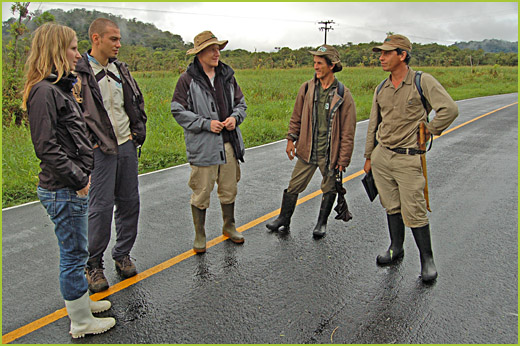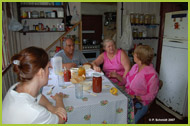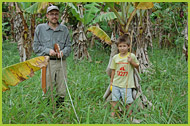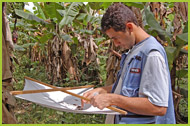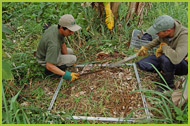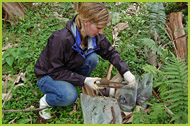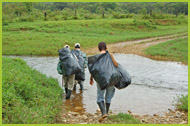Objectives
Aim of the project is the expansion of knowledge on diversity and ecosystem functions in forests under human influence and agroforestry systems of the Mata Atlântica.
Concrete tasks are:
- to assess and evaluate the diversity of plants and soil biota in various forests of different ages, underlying different anthropogenic alterations
- to measure diversity-based ecosystem functions and services like the degradation of plant biomass or nutrient- and water cycles
- to develop a classification system, based on the collected species, which indicates the ecosystem quality of secondary forests of the southern Mata Atlântica and their suitability as habitat for native species. On this basis management plans for the preservation of the unique biodiversity can be developed.
To achieve these goals, the project studies the diversity and functioning of secondary forest habitats of different ages and anthropogenic influences, with special attention on soil biota ranging from decomposers like microorganisms and fungi, tiny little enchytraeids and nematodes to ecosystem engineers like earthworms and ants, from detritivorous and polyphagous beetles and ants to top predators like spiders and some ant species.
Synthesis of the botanical and zoological inventories with the functional studies gives information about the resilience (sensitivity, regeneration capacity and -speed) of the different forest stages.
Important characteristics of the project are the interdisciplinary cooperation based on partnerships and the ecosystematic approach, as required in a directive of the Contracting States for the implementation of the Biodiversity Convention. Providing comprehensive information to the public and the involvement of users of future results is of major concern for the supporting institutions CNPq and BMBF and the project management organization at the German Aerospace Centre (DLR).
